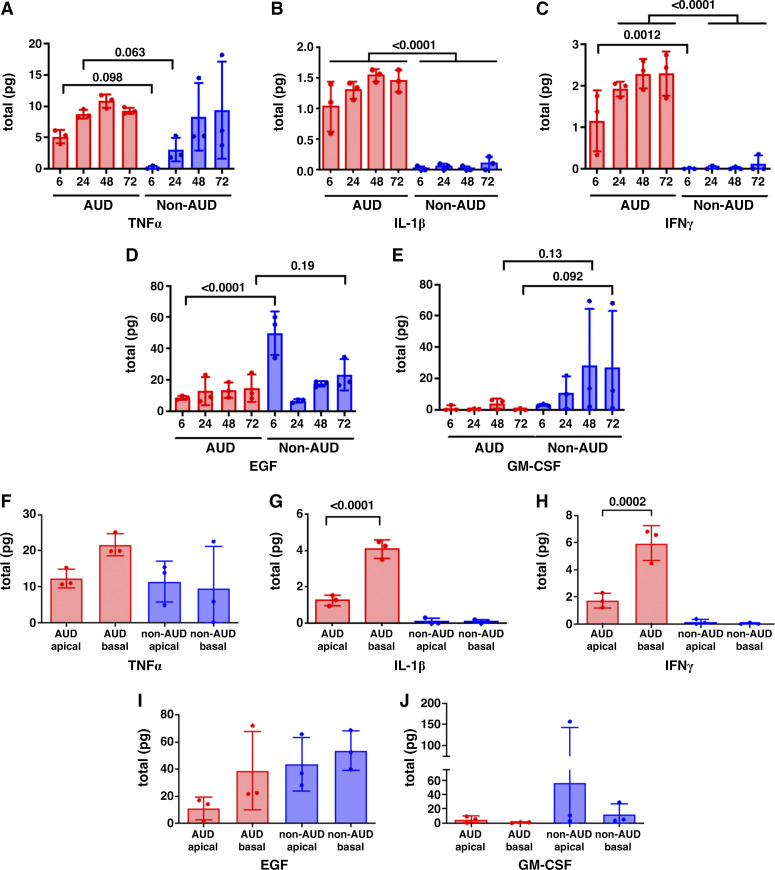Figure 6.
Proinflammatory cytokines were preferentially secreted by alcohol use disorder (AUD) cells in a polarized manner in response to infection. Differentiated bronchial cells from patients with non-AUD and AUD were infected with severe acute respiratory syndrome coronavirus 2 (SARS-CoV-2) and analyzed for cytokine secretion at 6, 24, 48, and 72 h postinfection (A–E) or analyzed for apical and basolateral secretion over the entire time course (F–J). There was a trending or significant increase in proinflammatory cytokine secretion (TNFα, IL-1β, and IFNγ) by AUD cells at some or all timepoints. There was a trending or significant increase in anti-inflammatory cytokines by non-AUD cells at some timepoints. AUD cells secreted significantly more basolateral IL-1β, and IFNγ. There was equivalent apical and basolateral secretion of TNFα, epidermal growth factor (EGF) and granulocyte macrophage-colony stimulating factor (GM-CSF) by AUD cells. For all five cytokines, non-AUD cells secreted comparable amounts apically and basolaterally. n = 3 biological replicates consisting of samples from three Transwells per group. Values represent means ± SD in each case. Samples were analyzed using one-way ANOVA with Fisher’s least significant difference (LSD) test.

